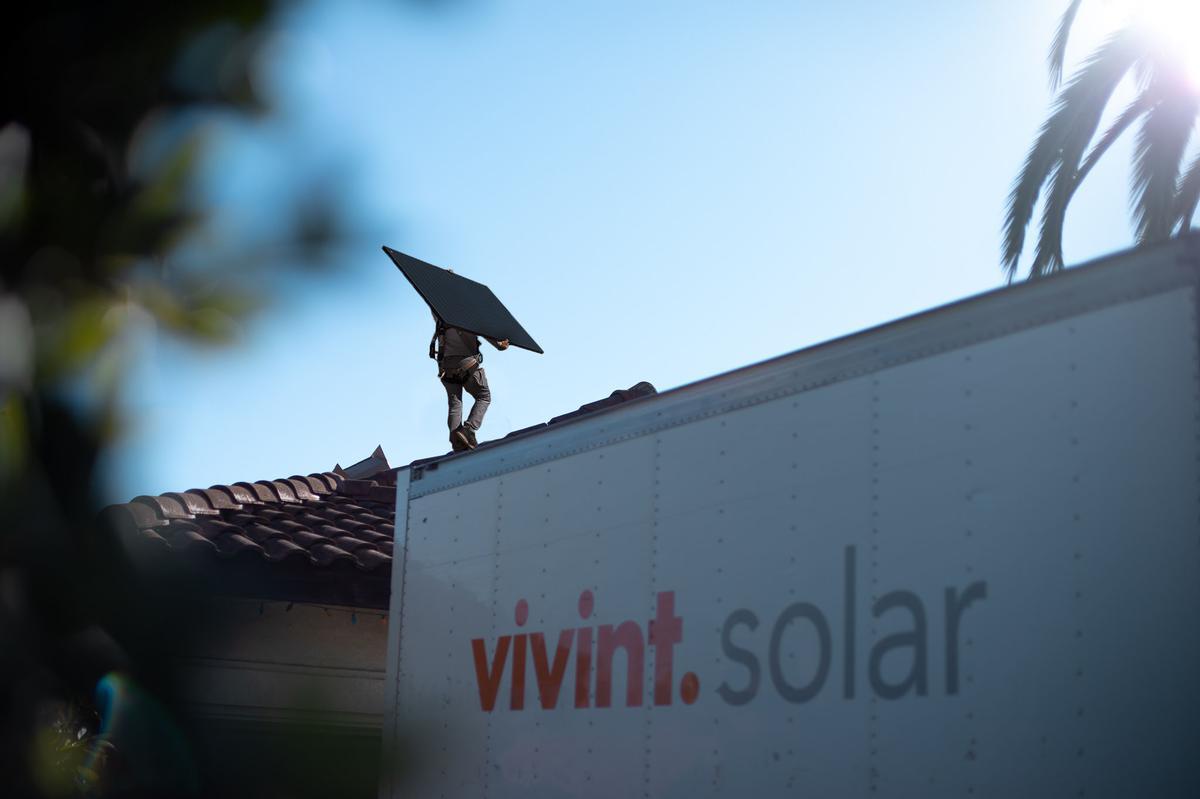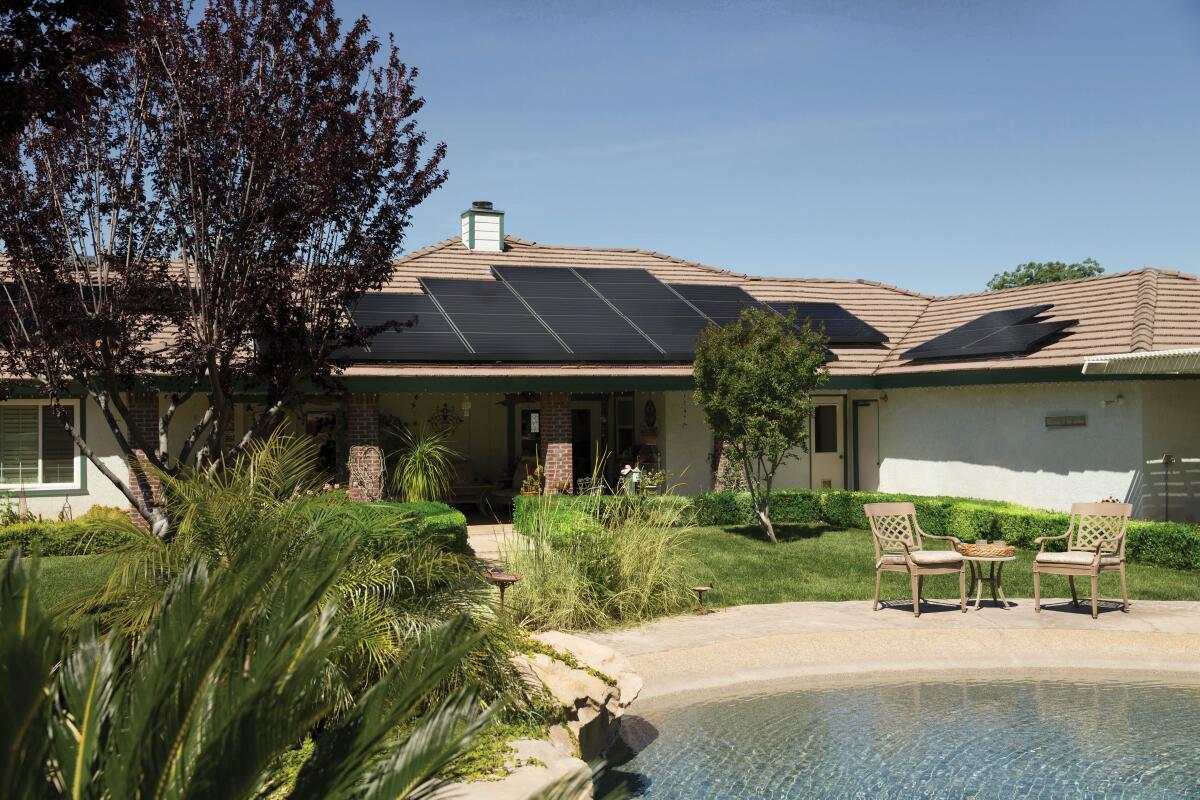If you’re a SoCal homeowner, now might be the best time to go solar. Here’s what you need to know.

- Share via
On average, the sun shines down fully or partially on the Southern California region 292 days out of 365. That’s 80% of the calendar year.
Meanwhile, almost half of carbon emissions worldwide come from fossil-fuel-burning electricity, and across California, power rates and usage are on the rise. Due to last year’s devastating wildfires, electricity rates are expected to rise during the hottest part of this summer.
The New York Times reports that the utility for our neighbors in Northern California has proposed around a $22 to $23 increase in costs on a $100 utility bill. This could cause similar increases statewide as regulators manage the increased risks and potential liabilities facing utilities. When you consider these facts together, what should you conclude? Simple: that this is a golden opportunity for Southland homeowners to capitalize on the region’s abundant sunshine, to decrease their home’s reliance on premium-cost electricity, and to help improve the environment all at once — by going solar.
The benefits of going solar are many. The foundational concepts behind today’s solar energy systems were first put into practice in the 1880s, making this one of the world’s first and most straightforward green energy technologies, not to mention a time-tested success. Many rebates, tax credits and other incentives may be available for homeowners who install solar systems in California.
But it’s this thicket of potential rewards that leads to much misinformation and confusion about how, where and at what cost a solar system can be installed. Fortunately, Vivint Solar can clear things up.

Vivint Solar is a Utah-based full-service residential solar provider that designs, installs and maintains solar systems for homeowners in 22 states nationwide, including California. A cornerstone of Vivint Solar’s business model is its commitment to helping homeowners make sense of the state regulations, rebates and other nuances that can affect an installation, and helping them understand how to sort out the paperwork with state and local utilities. The idea is to empower customers to make smart choices for their homes — not just show up to slap a set of solar panels on the roof before leaving customers to their own devices.
In fact, the benefits of solar are so well recognized, California is leading the way as the first state to pass a mandate that all new homes built from 2020 must include solar energy. Seventy percent of American’s support this move, according to a new survey by Vivint Solar.
Given Southern California’s dense and wildly varied living situations, the questions that come with considering a solar system stack up fast and reveal options and contingencies that can quickly overwhelm. Is it better to lease or buy a system? Will a homeowners’ association allow solar systems? What issues might arise if your home is a condo or it’s in a planned community?
Vivint Solar, with its copious experience in installations statewide, can provide straight-talk answers to all of these questions and more. If you’re dealing with an HOA, for instance, Vivint Solar’s experts can walk you through new state laws relaxing HOA restrictions on installation of solar power systems, even in condos.
Once the eligibility issue is settled — ideally in the positive for solar installation — Vivint Solar walks customers through an important consultation and design phase in advance of the installation. This detail-oriented process is industry-leading, with Vivint Solar’s technicians performing a custom assessment unique to each installation scenario that’s designed to address specific solar needs and optimize system performance based on real figures from energy use, local power grids, and the slope and orientation of the rooftop installation area.
Vivint Solar handles permitting and informs customers about local, state or federal rebates and tax credits. That’s important because with certain incentives, a solar installation can come with a large discount to the consumer.

Many homeowners are concerned about what happens post-installation. Will an installer activate the equipment, then offer no support when the system goes offline or needs maintenance? Accessing a solar system to do repairs, if they are ever needed, should be left to the experts, both because most of the system is located on the rooftop and it is connected to a high-energy power grid. DIY is typically out of the question and solar repairs can be complicated and costly.
Vivint Solar solves the issue with unmatched support of their installed systems. Their vetted installers and service staff provide customers peace of mind before, during and after a solar install, and contribute to their leading reliability in the long run.
Homeowners often think solar for the long-term savings, and it’s no small issue. In a sweltering California summer, air conditioning alone can cost hundreds of dollars a month to operate. Throw in connected devices and always-on items like computers, and energy costs can skyrocket into the hundreds, or even thousands, of dollars during peak months.
This might be the most important part of having solar panels: You’re generating your own energy right when it’s needed the most — with the sun beating down on your home, and everyone else’s. You may not need to purchase as much peak power from the grid, and utilities are buying back extra energy your system generates and sends to the grid. Southern California Edison, for example, offers net metering: For every kilowatt-hour you feed into the grid, you get a credit value worth the rate you would have been charged if you had used a kilowatt-hour from the utility. These credits can be used to offset your electricity costs when your system is generating power. With solar, you’ll be on a rate plan that charges, and credits, you based on the season and time of day that you use or produce energy. This gives you more control over your energy costs because not only can you save money from your solar energy credits, but also by being smart about when you use your energy.
It all adds up to savings, flexibility, eco-friendliness and much more, and you can get it all with industry-leading installation and support. Why not talk to Vivint Solar about going solar today?
—Alan LaGuardia for Vivint Solar
Business to Business
Connect with the Southern California business community—sign up for our weekly newsletters to stay informed.
You may occasionally receive promotional content from the Los Angeles Times.